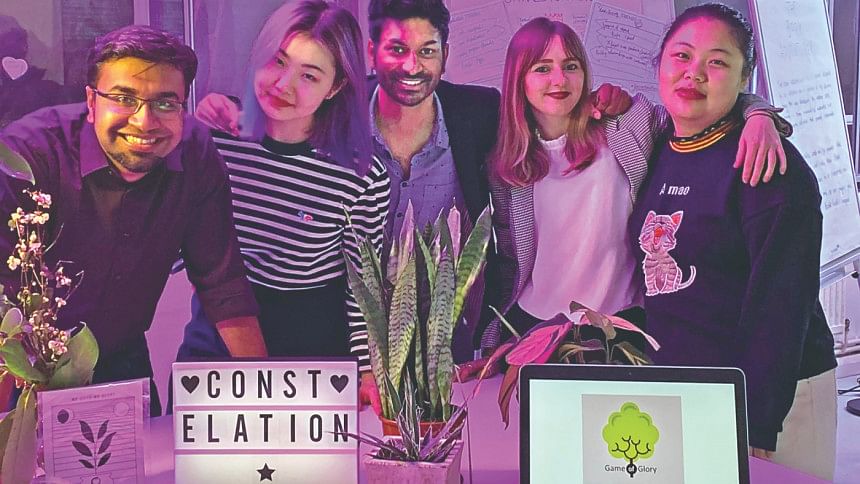Can we learn creativity?

"He is creative"- these are the words that I always desire to hear from people. I relish the moments of people acknowledging me as creative, and these are the magical words that I always want to associate with my brand persona. Sadly, no one has said this to me yet.
According to the World Economic Forum, creativity is one of the top characteristics of employability in the coming decade. IBM 2010 Global CEO Study selected creativity as the most crucial factor for future success. It was also indicated that creativity is the most critical ability that a good leader must show to address the complexity of the new economic environment. I think creativity is the future currency - a human trait which artificial intelligence cannot replace.
The continuous demand for creative thinkers is on the rise. So, next time you meet me, just let me know your views on me being creative. Even if I am not, I can always learn to be creative. Can't I?
To the ancient Greeks, creative persons were the inspired interpreters of God. But this is the twenty-first century, and there are different approaches and academic pathways to learning creativity. I am pursuing my master's in Creativity: Innovation and Business Strategy. I have to be creative, and I am not kidding. Let us discuss how creativity can be learned.
Creativity is part of the human capital - and we all have creative potential. Some of us have it more naturally than others, but everyone has it in a particular domain. We just have to identify and demonstrate it. Getting an idea is the first part of the innovation cycle - once you have the idea, you are already being creative. But it needs to be validated and executed as per the plan.
Creativity is the emergence of new ideas through experimentation and research. The benchmark of creativity comes from the novelty and usefulness of ideas. You can brainstorm and come up with many ideas, but it needs to be backed up by research and analysis to pick the right idea that clicks for a project, and that idea must have the appropriateness to solve the considered problem.
Translating creativity into an acceptable creation requires more skills than creative thinking. From ideation to planning and delivering the final product, a creative professional needs to follow a step-by-step process of creative performance. To become creative, first of all, you need to challenge the common perceptions and ask the question, "What if something is done in a different way?"
So, once you have conceived, tested and fine-tuned the idea for a prototype through research and feedback, you can see the problems from a fresh point of view to give them unique propositions. But to creative professionals, these are potentials, not problems.
Moreover, creativity works well when you understand the relevant tools and techniques as well. With a basic understanding of the process of creative production, let's discuss the components of creativity. According to the Harvard Business School professor, Teresa Aambile, expertise, creative thinking skills, and motivation are three components of creativity. It starts with your knowledge and intellectual capabilities that blend with your imagination and relevant creative skills. Next, you need the motivation to gain something, which can be some tangible rewards or some intrinsic rewards. For example, giving back to the world or creating something inspired by an ideology.
Creativity is considered as an individual capability, coupled with individual motivation. You also need to be a part of the creative framework, in situations where creativity can be applied. In the end, creativity is a value generation process, where there should be an outcome or end-product.
So, to be creative, you have to practice creativity. You need to brainstorm out of the box ideas that can change the world, without limiting yourself and without any fear. Sitting on a chair will hardly get you anywhere - because this chair is the enemy of creativity - stand up, roam around and think. We are so used to sitting on chairs and work all day that it makes us lazy, both physically and psychologically.
Once we had an engaging exercise in our idea generation class. We had to stand up from our enemy 'chair' and imagine our class elements as something new and then pitch it in front of others. I transformed my chair into a portable time machine for households. The time machine will let people travel beyond hours and location, facilitating families to spend their desired vacations.
In another instance, we had to identify the creative value chain problem of a retail store of Exeter and come up with a solution based on gamification. My team identified that the retail shop is running with the ethos of sustainability and well-being, rather than just targeting profits. So, we designed an in-store treasure hunt game for customers, which would let them understand the effects of sustainability in this world for the long term. Moreover, we planned an app that will create a sustainable community where users will grow from a seed to tree eventually by playing the games. This will make consumers part of the value chain who care for the community, and thus, revenue will be a logical sequence. For this project, we came up with creative solutions based on the design thinking process of empathy, define, ideation, prototype and test.
All in all, creativity is a journey of different elements that connect the dots from the problem identification to the solution. With that in mind, let's start our next creative journey and conceive unique and dynamic solutions for a better world.
The author is a Chevening scholar currently studying MA in Creativity: Innovation and Business Strategy at the University of Exeter. He is the digital marketing manager of The Daily Star (currently on study-leave). If you have any feedback on this writeup, you can send a creative e-mail to [email protected].

 For all latest news, follow The Daily Star's Google News channel.
For all latest news, follow The Daily Star's Google News channel. 



Comments